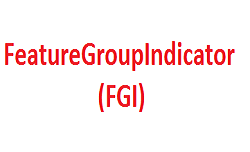3GPP Release 13
3GPP Release 13 first release was frozen in March 2016. It was brought to reality with quite extensive set of new functionalities as compared to LTE-Advanced. They are summarized below.
- LTE in unlicensed spectrum
- Carrier Aggregation enhancements
- LTE enhancements for Machine-Type Communications (MTC)
- Enhancements for D2D
- Elevation Beamforming / Full-Dimension MIMO
- Indoor positioning
- Single-cell Point-to-Multipoint (SC-PTM)
LTE in unlicensed spectrum (LAA) feature goal is to enhance LTE to operate in unlicensed spectrum.While licensed spectrum remains 3GPP operators’ top priority to deliver advanced services and user experience, the opportunistic use of unlicensed spectrum is becoming an important complement to meet the capacity requirement. Licensed-Assisted Access will give operators the option to make use of unlicensed spectrum with a unified network, result in operational cost saving, improved spectral efficiency and a better user experience.The focus of the Release 13 is on the aggregation of a primary cell, operating in licensed spectrum to deliver critical information and guaranteed Quality of Service, with a secondary cell, operating in unlicensed spectrum to opportunistically boost data rate. A key objective of this feature is to ensure fair coexistence between LTE LAA and Wi-Fi.
Carrier Aggregation enhancement:The LTE CA basic framework was standardized in Release 10, with the protocol allowing aggregation of up to 5 Component Carriers (CCs) in downlink and uplink. As operators have planned for deployments with the aggregation of more and more carriers, it has become necessary to expand the LTE CA framework to be able to aggregate more than 5 CCs. The goal in Release 13 is to expand LTE CA up to 32 CCs and to achieve high data rates for LTE as well as in the flexibility to aggregate large numbers of carriers in different bands. This enhanced framework will also be useful for LAA operation in unlicensed spectrum where large blocks of spectrum are available.
LTE enhancements for Machine-Type Communications (MTC): MTC work started in Release 12 to specify key physical layer and RF enablers to enhance LTE’s suitability for IoT market, the key focus for Release 13 is to define a new low complexity UE category type that supports reduced bandwidth, reduced transmit power, reduced support for downlink transmission modes, ultra-long battery life via power consumption reduction techniques and extended coverage operation. In terms of reduced bandwidth the goal is to specify 1.4 MHz operation at the terminal within any LTE system bandwidth, allowing operators to multiplex reduced bandwidth MTC devices and regular devices in their existing LTE deployments. For coverage, the goal is to improve by 15dB the coverage of delay-tolerant MTC devices, allowing operators to reach MTC devices in poor coverage conditions – such as meters located in basements.
Enhancements for D2D: D2D/ProSe framework standardized in Release 12 to support and it need to be enhance to support more advanced proximity services for Public Safety (PS) and Consumer use cases. Release 13 enhancement will be to support the requirements of System groups as necessary for Mission Critical Push-To-Talk (MCPTT).
Elevation Beamforming / Full-Dimension MIMO: Beamforming and MIMO have been identified as key technologies to address the future capacity demand. But so far 3GPP evaluations for these features have mostly considered antenna arrays that exploit the azimuth dimension. So in Release 13, 3GPP RAN group is studying how two-dimensional antenna arrays can further improve the LTE spectral efficiency by also exploiting the vertical dimension for beamforming and MIMO operations. Also, while the standard currently supports MIMO systems with up to 8 antenna ports, Release 13 will look into high-order MIMO systems with up to 64 antenna ports at the eNB, to the use of higher frequencies in the future.
Indoor positioning: In Release 13 study will first determine the performance of already specified positioning methods in indoor environments, and later evaluate potential improvements to the existing methods or new positioning methods in order to achieve better positioning accuracy.While initially driven by the FCC request to improve the positioning accuracy in indoor environments for emergency calls, further feature can expand the capability of the LTE allowing operators to address the growing market of indoor positioning.
Single-cell Point-to-Multipoint (SC-PTM): eMBMS was developed to efficiently deliver multicast services over areas typically spanning multiple cells. However, there could be a number of applications that may benefit from supporting multicast services over a single cell. Release 13 feature “Support of single-cell point-to-multipoint transmission in LTE” will determine any potential benefits and solutions of SC-PTM operation based on the LTE downlink shared channel.
Related Posts:
- 3GPP Release 8
- 3GPP Release 9
- 3GPP Release 10
- 3GPP Release 11
- 3GPP Release 12
- 3GPP Release 13
- 3GPP Release 14
- 3GPP Release 15



